|
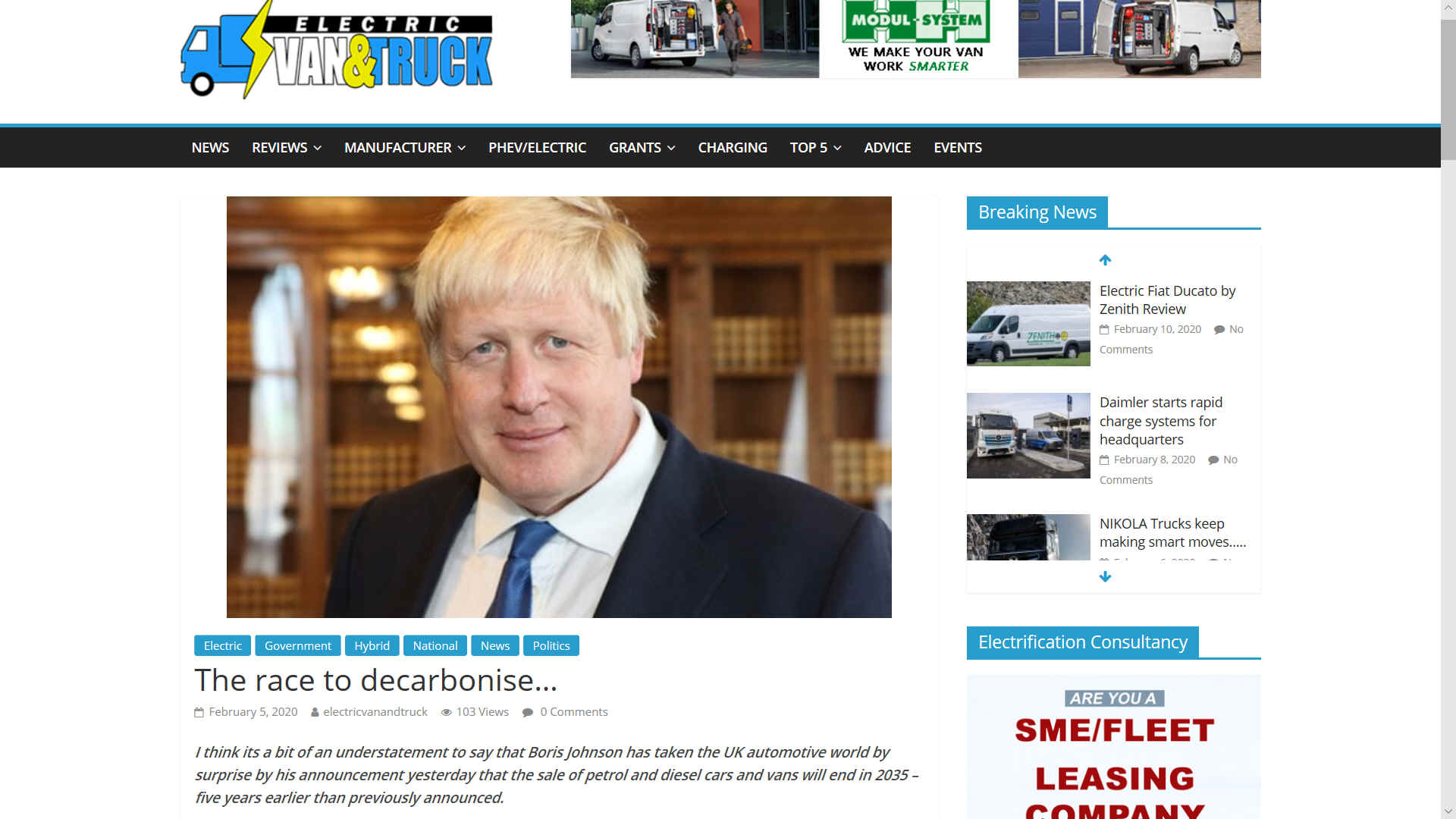
ELECTRIC
TRUCK & VAN FEB
2020 - I think its a bit of an understatement to say that Boris Johnson has taken the UK automotive world by surprise by his announcement yesterday that the sale of petrol and diesel cars and vans will end in 2035 – five years earlier than previously announced.
Not only that, he’s gone even further by including hybrid vehicles which will send a shiver down the spines of one or two corporate shoulders in both the automotive and leasing fraternity.
Interestingly, he didn’t mention if any of the staged goals along the way have changed. For instance, the Department for Transport’s “Road to Zero” programme (essentially the government’s bible on the decarbonising of the automotive sector) mentioned a ‘2030 stage’ when it was compiled by the former Transport Secretary Chris Grayling just 18 months ago.
According to the document, the government wanted to see at least 50% – and as many as 70% – of new car sales and up to 40% of new van sales being ultra low emission by 2030.
Of course, one of the key changes from the original goals is the inclusion of hybrids to the ban, basically meaning we are going for zero emission at tailpipe rather than low emission – a phenomenally major deviation from the course already set less than 18 months ago.
So where does this leave the automotive industry and for our part the light commercial vehicle sector?
Before I answer this, let me first let you know my position on the whole issue. I am totally behind any sensible and achievable plan to de-carbonise the road transport sector; I feel we must and should aim as high as possible BUT reality must also play its part!
We have to remember not every van operation is currently suitable for electrification but this will change over time, but the speed of transition and matching this to product availability will be a challenge.
We also have to recognise that light commercial vehicles come second in the pecking order after passenger cars for most OEMs. I don’t know why, because often the average profit per unit is higher, but obviously the volumes are smaller (although growing disproportionately faster than passenger cars!).
Inevitably vans will be competing with their passenger car cousins for batteries and that creates a problem, i.e. battery supply. This is not a vehicle issue – its basically down to a “battle for the batteries”!
The UK market cannot be seen isolation – it is a very large global market. Comparisons are also often drawn with Norway, but in reality this is also irrelevant because of everything from the carbonisation of their grid to the size of the market and their incentive schemes – I wish it was that simple!
For our country to have the ability to ban the sale of new diesel, petrol and hybrids by 2035, we will need a sea change in government attitude and more importantly financial support!
Just as imperative, the European OEMs need to substantially increase their investment and capacities because selling around 3.5m zero-emission cars and vans a year in the UK within 14 years (we are already in 2020) is a brilliant goal to set – but setting a goal and providing the environment for that to be achieved is another .
All of us in the industry need to call the government to account if we are not given the tools to make this happen; they set the goals so should also provide the framework and financial environment to help industry achieve it!
Its going to be a bumpy and challenging 14 years, but I wouldn’t miss it for the world and I support the maxim; that its better to try and fail than never try at all, especially when failure is not an option!
By Tim
Campbell
DOT
NEWS 18 OCTOBER 2017 Boost for electric and driverless car industry as government drives forward green transport revolution
Automated and Electric Vehicles Bill will mean more electric car chargepoints and enable
insurance for driverless cars.
Motorway services and large petrol retailers will be required to install chargepoints for
electric cars, under plans announced in the
House of Commons today (18 October 2017) by Transport Minister John Hayes. The Automated and Electric Vehicles Bill will increase the access and availability of chargepoints for
electric
cars, while also giving the government powers to make it compulsory for chargepoints to be installed across the country and enabling drivers of automated cars to be insured on UK
roads
Automated vehicles have the potential to greatly reduce road traffic accidents - in 2016 85.9% of collisions causing injury involved human error, while official research estimates that the market will be worth £50 billion to the UK economy by 2035.
Transport Minister John Hayes said: We want the UK to be the best place in the world to do business and a leading hub for modern transport technology, which is why we are introducing the Automated and
Electric Vehicles Bill in Parliament and investing more than £1.2 billion in the industry. This bill will aid the construction of greater infrastructure to support the growing demand for automated and electric vehicles as we embrace this technology and move into the future. Drivers of electric vehicles will be able to easily locate and charge at any chargepoint, using information from sat navs or mobile apps, regardless of the vehicle make or model - making running an electric vehicle even easier. All chargepoints will have to be ‘smart’, meaning they can interact with the grid in order to manage demand for
electricity across the country. 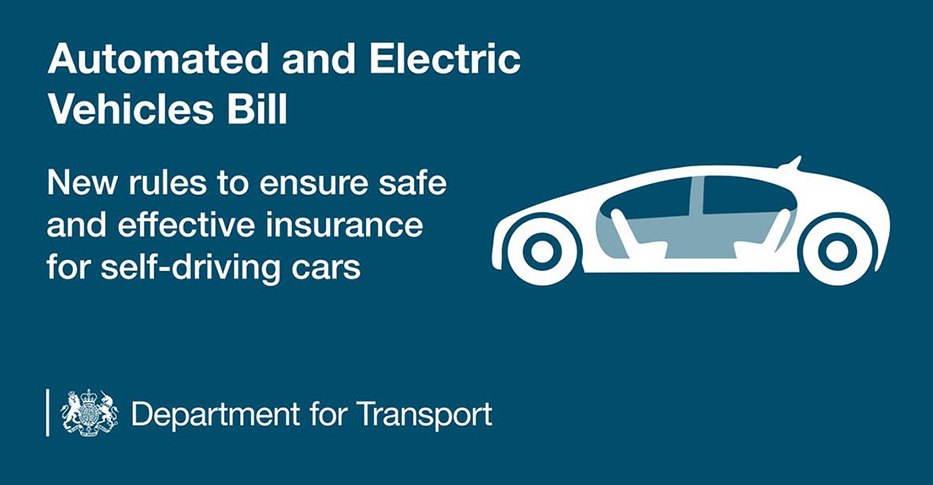
Roads Minister Jesse Norman said: Automated and electric vehicles will help improve
air quality, cut congestion, boost safety and create thousands of skilled jobs in the UK. We have already supported the purchase of 115,000 ultra-low emission cars and there are already more than 11,500 publicly available chargepoints, but the demand continues to grow as more people purchase electric vehicles to cut fuel costs and boost the environment. Jesse Norman will also announce further funding for local authorities at the Smarter Travel Conference in Milton Keynes on Thursday (19 October 2017) to fund install chargepoints in residential areas where cars are parked on the street. Steve Gooding, Director of the
RAC Foundation said: We are pleased to see the provisions of the Automated and Electric Vehicles Bill re-starting their passage through the Parliamentary process It is clear that government needs to do more to accelerate the take-up of electric vehicles, tackling the issues that are currently persuading motorists to stick with conventional fuels, as well as paving the way for autonomy The test, though, will be how effectively those powers are exercised All drivers of automated vehicles will be required to be insured and victims of collisions involving an automated vehicle will have quick and easy access to compensation, in line with existing insurance practices. James Dalton, ABI: Insurers wholeheartedly support the development of automated vehicles, as they have the potential to significantly reduce the large number of road accidents caused by driver error. We support the approach the government has taken in the bill, as this will give the industry time to prepare for the commercial rollout of fully automated driving technology. The bill will receive its first reading in the House of Commons today. Roads media enquiries
020 7944 3021
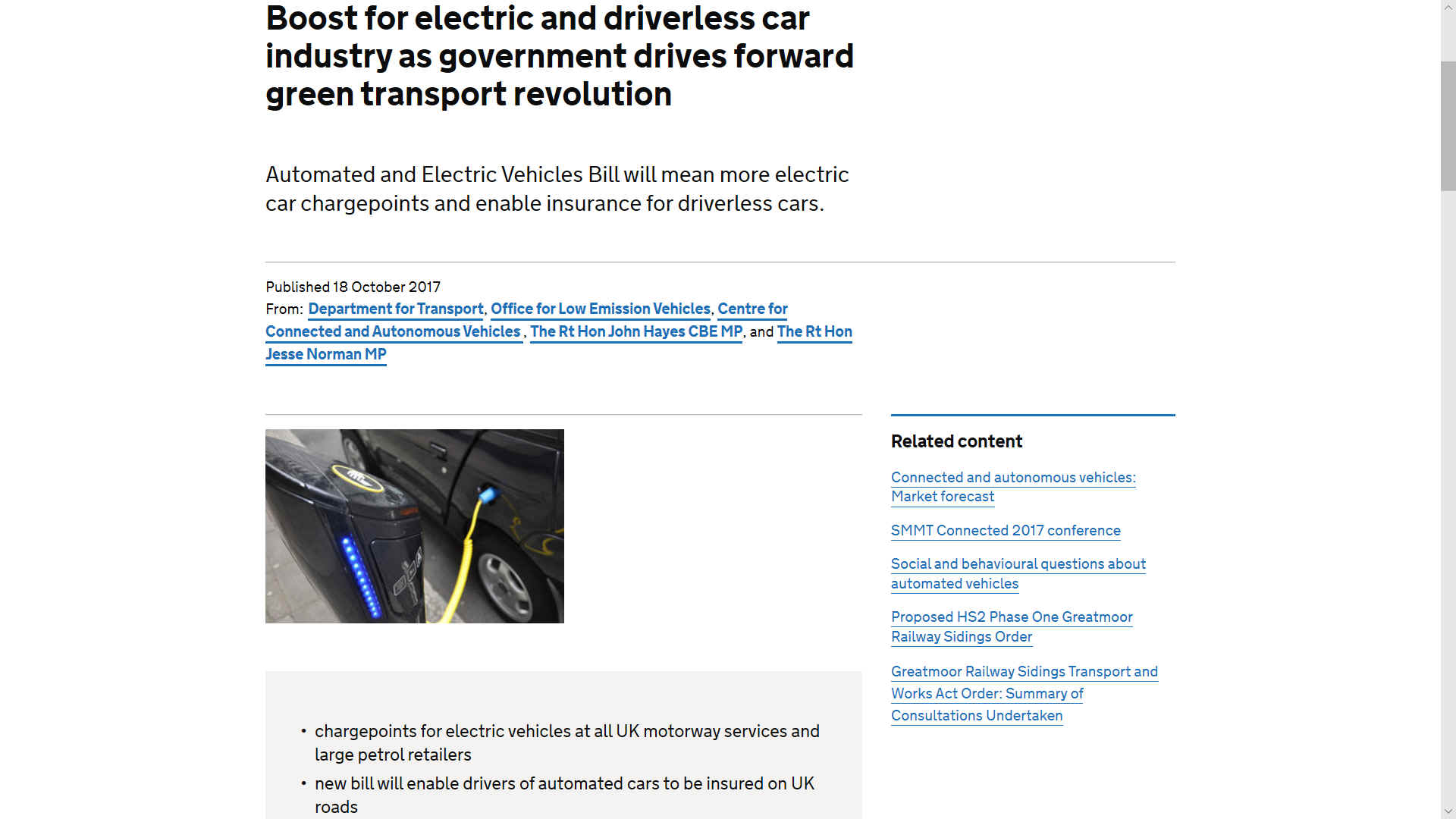
DOT
UK - This legislation is part of the Government’s industrial strategy to promote the development and deployment of both automated and electric vehicles and is in line with policies on climate change. Note that an automated vehicle (AV) does not have to be electrically powered and an electrically powered vehicle does not have to be an AV.
The purpose of this legislation is both to amend the existing compulsory third party insurance framework by extending it to cover the use of automated vehicles and deal with electric and
hydrogen powered vehicle charging infrastructure.
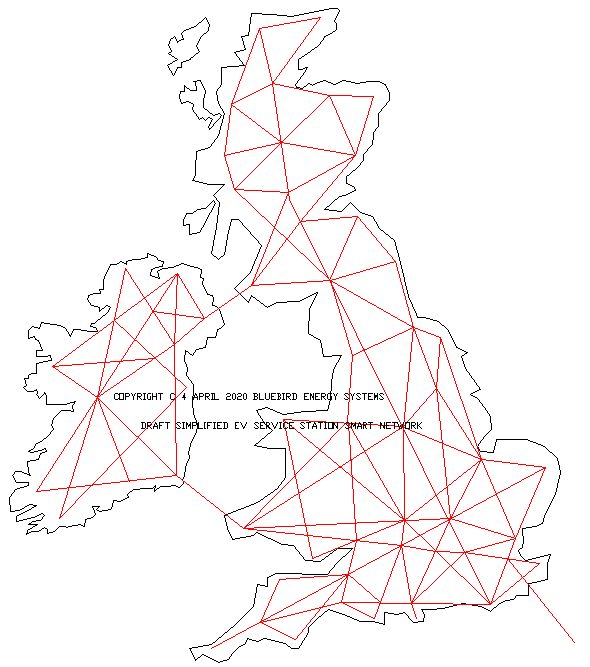
UK
MAP - Draft infrastructure
networked grid for the UK to kick-start EV service station building, aiming
for a low carbon society that is sustainable and climate friendly by 2050 to
comply with the targets set by the Climate
Change Act 2008. This map is simplified and includes the Republic of
Ireland for practical reasons. Supplied by and used with permission of Bluebird
Energy Systems. If we use just the intersections as likely locations
that would mean installing 60+ stations, that could recharge more than the
14,000 charge points in the UK as of January of 2018. Another 1,800 such
stations at strategic locations could service all 25,000,000 million
vehicles in the United Kingdom. Optimistic, but you have to start somewhere
when conceptualizing. The UK currently (May 2021) only has 14
hydrogen refueling points.
DOT NEWS 19 JULY 2018 New powers to kick-start the rollout of electric chargepoints across the nation.
The new laws will improve consumer confidence in charging electric vehicles and modernise insurance rules. The UK took a major step in
it's electric vehicle revolution today (19 July 2018) when the Automated and Electric Vehicles Act passed through Parliament. The act is a significant step towards improving air quality, cutting congestion, boosting road safety and the creation of thousands of jobs across the UK. The AEV Act will see a massive improvement in electric chargepoint availability; giving the government new powers to ensure motorway services are upgraded with plenty of points, and even allowing mayors to request installations at large fuel retailers in their areas. The new laws will improve consumer confidence in charging their vehicles by: -
making sure that public chargepoints are compatible with all vehicles -
standardising how they are paid for -
setting standards for reliability 
MODEL
1:20 - April 6 2020, a model of the service station began construction, shown here with two
Mercedes
articulated container trucks inside. We are using plywood for the building
and some of the working parts - that cannot be shown due to patent
law prohibiting prior publication. The Automated
& Electric Vehicle Act 2018, makes it law in England that provision
must be made for charging and refuelling of electric vehicles at service
stops. This system would more accurately be described as a refuelling point
- since the energy exchanges for trucks and cars are virtually instant. The
building can be a quarter this size for city locations where space is
limited. But for load levelling purposes, the larger the capacity of stored electricity,
the more efficient the grid. Copyright photograph © 6 April 2020, Cleaner
Ocean Foundation. At the moment such development is not supported by
funding from the Department
for Transport (Innovate
UK) or Horizon
Europe. The Cleaner Ocean Foundation is trickle funding model build from
directors loans. Meaning very slow progress, until funding rules evolve to
recognise SMEs as special cases. This project could have been completed by now
with appropriate nurturing.

MODEL
1:20 - May 2021, the model is making slow progress. It will demonstrate
how unmanned robo-trucks
and taxis
- hydrogen and battery EVs - could be serviced without the need for human
intervention. A (very) young volunteer is helping to build this unit in his
spare time, while learning about coding in school. The workings will be
controlled by micro computers at this scale, such as Arduino
or Raspberry
Pi, but will need geodata using 5G satcoms for unmanned vehicles.
Jesse Norman, Roads Minister, said: The UK is becoming a world leader in the roll-out of low-emission transport. Today we have passed a significant milestone in that journey. The increasing automation of our cars is transforming the way we drive, and the government is steadily updating our laws in order to prepare for the future. This act will ensure that the UK’s infrastructure and insurance system is ready for the biggest transport revolution in a century. The act will also bring automated vehicle insurance in line with longstanding motor insurance practice, ensuring that motorists are covered both when they are driving, and when the driver has legitimately handed control to the vehicle. The measures in the new act form part of the government’s recently launched Road to Zero strategy. The strategy sets the stage for the biggest technology advancement to hit UK roads since the invention of the
combustion engine. The UK will also be hosting the world’s first Zero Emission Vehicle summit later this year in Birmingham, promoting the UK as a world leader for investment in and uptake of zero emission vehicles.
UK
CABINET POLICY MAKERS - APRIL 2020
SPONSORS
OF THE BILL
Chris Grayling
and Baroness Sugg - Transport
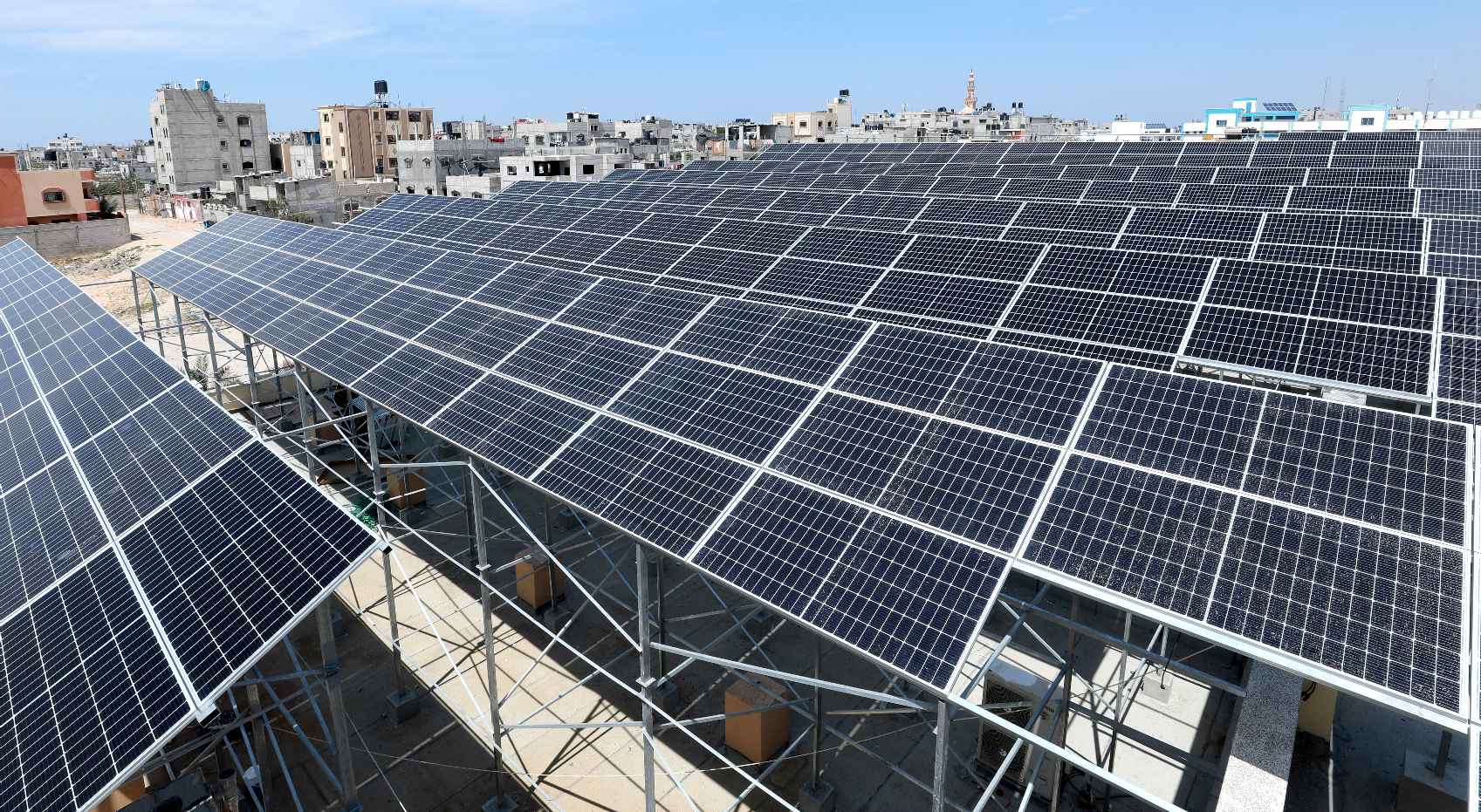
WHO
JUNE 2019 - A newly installed solar power plant in the Gaza Strip, Occupied Palestinian Territory (OPT), will reduce Nasser Hospital’s reliance on donated fuel and, by providing life-saving interventions, help build resilience. This is according to the
World Health Organization (WHO).
THE
AUTOMATED and ELECTRIC
VEHICLES ACT 2018
Introductory
Text
PART 1 Automated vehicles: liability of insurers etc
1.Listing
of automated vehicles by the Secretary of State
2.Liability
of insurers etc where accident caused by automated vehicle
3.Contributory
negligence etc
4.Accident
resulting from unauthorised software alterations or failure to update software
5.Right
of insurer etc to claim against person responsible for accident
6.Application
of enactments
7.Report
by Secretary of State on operation of this Part
8.Interpretation
PART 2 Electric vehicles: charging
Introductory - 9.Definitions
Requirements and prohibitions
10.Public
charging or refuelling points: access, standards and connection
11.Large
fuel retailers etc: provision of public charging or refuelling points
12.Duty
to consider making regulations under section 11(1)(a) on request by elected
mayor
13.Information
for users of public charging or refuelling points
14.Transmission
of data relating to charge points
15.Smart
charge points
General and supplementary
16.Enforcement
17.Exceptions
18.Regulations
19.Report
by Secretary of State on operation of this Part
PART 3 Miscellaneous and general
20.Minor
and consequential amendments
21.Commencement
22.Extent
23.Short
title
SCHEDULE
MINOR AND CONSEQUENTIAL AMENDMENTS

THE
AUTOMATED and ELECTRIC VEHICLES ACT 2018
2018 CHAPTER 18 [19th July 2018]
An Act to make provision about automated vehicles and electric vehicles.
Be it enacted by the Queen’s
most Excellent Majesty, by and with the advice and consent of the Lords
Spiritual and Temporal, and Commons, in this present Parliament assembled, and
by the authority of the same, as follows:—
Introductory Text
PART 1 Automated vehicles: liability of insurers etc
1
Listing of automated vehicles by the Secretary of State
(1) The Secretary of State must prepare, and keep up to date, a list of all
motor vehicles that—
(a) are in the Secretary of State’s opinion designed or adapted to be
capable, in at least some circumstances or situations, of safely driving
themselves, and
(b) may lawfully be used when driving themselves, in at least some
circumstances or situations, on roads or other public places in Great Britain.
(2) The list may identify vehicles —
(a) by type,
(b) by reference to information recorded in a registration document issued
under regulations made under section 22 of the Vehicle Excise and Registration
Act 1994, or
(c) in some other way.
(3) The Secretary of State must publish the list when it is first prepared and
each time it is revised.
(4) In this Part “automated vehicle” means a vehicle listed under this
section.
2
Liability of insurers etc where accident caused by automated vehicle
(1) Where —
(a) an accident is caused by an automated vehicle when driving itself on a
road or other public place in Great Britain,
(b) the vehicle is insured at the time of the accident, and
(c) an insured person or any other person suffers damage as a result of the
accident, the insurer
is liable for that damage.
(2) Where —
(a) an accident is caused by an automated vehicle when driving itself on a
road or other public place in Great Britain,
(b) the vehicle is not insured at the time of the accident,
(c) section 143 of the Road Traffic Act 1988 (users of motor vehicles to be
insured or secured against third-party risks) does not apply to the vehicle at
that time —
(i) because of section 144(2) of that Act (exemption for public bodies etc),
or
(ii) because the vehicle is in the public service of the Crown, and
(d) a person suffers damage as a result of the accident, the owner of the
vehicle is liable for that damage.
(3) In this Part “damage” means death or personal injury, and any damage
to property other than —
(a) the automated vehicle,
(b) goods carried for hire or reward in or on that vehicle or in or on any
trailer (whether or not coupled) drawn by it, or
(c) property in the custody, or under the control, of —
(i) the insured person (where subsection (1) applies), or
(ii) the person in charge of the automated vehicle at the time of the accident
(where subsection (2) applies).
(4) In respect of damage to property caused by, or arising out of, any one
accident involving an automated vehicle, the amount of the liability under
this section of the insurer or owner of the vehicle is limited to the amount
for the time being specified in section 145(4)(b) of the Road Traffic Act 1988
(limit on compulsory insurance for property damage).
(5) This section has effect subject to section 3.
(6) Except as provided by section 4, liability under this section may not be
limited or excluded by a term of an insurance policy or in any other way.
(7) The imposition by this section of liability on the insurer or vehicle
owner does not affect any other person’s liability in respect of the
accident.
3
Contributory negligence etc
(1) Where —
(a) an insurer or vehicle owner is liable under section 2 to a person (“the
injured party”) in respect of an accident, and
(b) the accident, or the damage resulting from it, was to any extent caused by
the injured party, the amount of the liability is subject to whatever
reduction under the Law Reform (Contributory Negligence) Act 1945 would apply
to a claim in respect of the accident brought by the injured party against a
person other than the insurer or vehicle owner.
(2) The insurer or owner of an automated vehicle is not liable under section 2
to the person in charge of the vehicle where the accident that it caused was
wholly due to the person’s negligence in allowing the vehicle to begin
driving itself when it was not appropriate to do so.
4
Accident resulting from unauthorised software alterations or failure to update
software
(1) An insurance policy in respect of an automated vehicle may exclude or
limit the insurer’s liability under section 2(1) for damage suffered by an
insured person arising from an accident occurring as a direct result of —
(a) software alterations made by the insured person, or with the insured
person’s knowledge, that are prohibited under the policy, or
(b) a failure to install safety-critical software updates that the insured
person knows, or ought reasonably to know, are safety-critical.
(2) But as regards liability for damage suffered by an insured person who is
not the holder of the policy, subsection (1)(a) applies only in relation to
software alterations which, at the time of the accident, the person knows are
prohibited under the policy.
(3) Subsection (4) applies where an amount is paid by an insurer under section
2(1) in respect of damage suffered, as a result of an accident, by someone who
is not insured under the policy in question.
(4) If the accident occurred as a direct result of —
(a) software alterations made by an insured person, or with an insured
person’s knowledge, that were prohibited under the policy, or
(b) a failure to install safety-critical software updates that an insured
person knew, or ought reasonably to have known, were safety-critical, the
amount paid by the insurer is recoverable from that person to the extent
provided for by the policy.
(5) But as regards recovery from an insured person who is not the holder of
the policy, subsection (4)(a) applies only in relation to software alterations
which, at the time of the accident, the person knew were prohibited under the
policy.
(6) For the purposes of this section —
(a) “software alterations” and “software updates”, in relation to an
automated vehicle, mean (respectively) alterations and updates to the
vehicle’s software;
(b) software updates are “safety-critical” if it would be unsafe to use
the vehicle in question without the updates being installed.
5 Right of insurer etc to claim against person
responsible for accident
(1) Where —
(a) section 2 imposes on an insurer, or the owner of a vehicle, liability to a
person who has suffered damage as a result of an accident (“the injured
party”), and
(b) the amount of the insurer’s or vehicle owner’s liability to the
injured party in respect of the accident (including any liability not imposed
by section 2) is settled, any other person liable to the injured party in
respect of the accident is under the same liability to the insurer or vehicle
owner.
(2) For the purposes of this section, the amount of the insurer’s or vehicle
owner’s liability is settled when it is established —
(a) by a judgment or decree,
(b) by an award in arbitral proceedings or by an arbitration, or
(c) by an enforceable agreement.
(3) If the amount recovered under this section by the insurer or vehicle owner
exceeds the amount which that person has agreed or been ordered to pay to the
injured party (ignoring so much of either amount as represents interest), the
insurer or vehicle owner is liable to the injured party for the difference.
(4) Nothing in this section allows the insurer or vehicle owner and the
injured party, between them, to recover from any person more than the amount
of that person’s liability to the injured party.
(5) For the purposes of —
(a) section 10A of the Limitation Act 1980 (special time limit for actions by
insurers etc in respect of automated vehicles), or
(b) section 18ZC of the Prescription and Limitation (Scotland) Act 1973
(actions under this section), the right of action that an insurer or vehicle
owner has by virtue of this section accrues at the time of the settlement
referred to in subsection (1)(b).
6 Application of enactments
(1) Any damage for which a person is liable under section 2 is treated as if
it had been caused —
(a) for the purposes of the Fatal Accidents Act 1976, by that person’s
wrongful act, neglect or default;
(b) for the purposes of sections 3 to 6 of the Damages (Scotland) Act 2011
(asp 7) (rights of relatives of a deceased), by that person’s act or
omission;
(c) for the purposes of Part 2 of the Administration of Justice Act 1982
(damages for personal injuries, etc Scotland), by an act or omission giving
rise to liability in that person to pay damages.
(2) Section 1 of the Congenital Disabilities (Civil Liability) Act 1976
(“the 1976 Act”) has effect for the purposes of section 2 of this Act —
(a) as if a person were answerable to a child in respect of an accident caused
by an automated vehicle when driving itself if the person—
(i) is or has been liable under section 2 in respect of any effect of the
accident on a parent of the child, or
(ii) would be so liable if the accident caused a parent of the child to suffer
damage;
(b) as if the provisions of this Part relating to liability under section 2
applied in relation to liability by virtue of paragraph (a) above under
section 1 of the 1976 Act;
(c) as if subsection (6) of section 1 of the 1976 Act (exclusion of liability)
were omitted.
(3) For the purposes of section 3(1), the Law Reform (Contributory Negligence)
Act 1945 and section 5 of the Fatal Accidents Act 1976 (contributory
negligence) have effect as if the behaviour of the automated vehicle were the
fault of the person made liable for the damage by section 2 of this Act.
(4) Liability under section 2 is treated as liability in tort or, in Scotland,
delict for the purposes of any enactment conferring jurisdiction on a court
with respect to any matter.
(5) An insurer or vehicle owner who has a right of action against a person by
virtue of section 5 does not have a right to recover contribution from that
person under the Civil Liability (Contribution) Act 1978 or under section 3 of
the Law Reform (Miscellaneous Provisions) (Scotland) Act 1940.
7 Report by Secretary of State on operation of this Part
(1) The Secretary of State must prepare a report assessing —
(a) the impact and effectiveness of section 1;
(b) the extent to which the provisions of this Part ensure that appropriate
insurance or other arrangements are made in respect of vehicles that are
capable of safely driving themselves.
(2) The report must be laid before Parliament no later than two years after
the first publication of the list under section 1.
8 Interpretation
(1) For the purposes of this Part —
(a) a vehicle is “driving itself” if it is operating in a mode in which it
is not being controlled, and does not need to be monitored, by an individual;
(b) a vehicle is “insured” if there is in force in relation to the use of
the vehicle on a road or other public place in Great Britain a policy of
insurance that satisfies the conditions in section 145 of the Road Traffic Act
1988.
(2) In this Part —
“automated vehicle” has the meaning given by section 1(4);
“damage” has the meaning given by section 2(3);
“insured person”, in relation to an insured vehicle, means any person
whose use of the vehicle is covered by the policy in question;
“insurer”, in relation to an insured vehicle, means the insurer under that
policy;
“road” has the same meaning as in the Road Traffic Act 1988 (see section
192(1) of that Act).
(3) In this Part —
(a) a reference to an accident includes a reference to two or more causally
related accidents;
(b) a reference to an accident caused by an automated vehicle includes a
reference to an accident that is partly caused by an automated vehicle.
PART 2 ELECTRIC VEHICLES: CHARGING
Introductory
9. Definitions
(1) For the purposes of this Part —
(a) “charge point” means a device intended for charging a vehicle that is
capable of being propelled by electrical power derived from a storage battery
(or for discharging electricity stored in such a vehicle);
(b) “hydrogen refuelling point” means a device intended for refuelling a
vehicle that is capable of being propelled by electrical power derived from
hydrogen;
(c) a charge point or a hydrogen
refuelling point is a “public charging or refuelling point” if it is
provided for use by members of the general public.
(2) In this Part —
“operator”, in relation to a public charging or refuelling point, has the
meaning given by regulations;
“prescribed” means prescribed by regulations;
“vehicle” means a vehicle that is intended or adapted for use on roads.
Requirements and prohibitions
10. Public charging or refuelling points: access,
standards and connection
(1) Regulations may impose requirements on operators of public charging or
refuelling points in connection with —
(a) the method of payment or other way by which access to the use of public
charging or refuelling points may be obtained;
(b) performance, maintenance and availability of public charging or refuelling
points;
(c) the components of public charging or refuelling points that provide the
means by which vehicles connect to such points (“connecting components”).
(2) Regulations under subsection (1)(a) may require operators —
(a) to provide a prescribed method of payment or verification for obtaining
access to the use of public charging or refuelling points;
(b) to co-operate with each other for the purposes of a requirement imposed by
the regulations (for example, by sharing facilities or information);
(c) to take prescribed steps for the purposes of such a requirement (for
example, to provide information to a prescribed person).
(3) Regulations under subsection (1)(b) may, for example, require the operator
of a public charging or refuelling point to ensure that the point complies
with prescribed requirements (which may include technical specifications).
(4) Regulations under subsection (1)(c) may, for example, require the operator
of a public charging or refuelling point to ensure that its connecting
components comply with prescribed requirements (which may include technical
specifications for connecting components or any related equipment).
11.
Large fuel retailers etc: provision of public charging or refuelling points
(1) Regulations may impose requirements on —
(a) large fuel retailers falling within a prescribed description, or
(b) service area operators falling within a prescribed description,
in connection with the provision on their premises of public charging or
refuelling points.
(2) Regulations under subsection (1) may, for example —
(a) require large fuel retailers or service area operators to provide public
charging or refuelling points;
(b) require public charging or refuelling points to be available for use at
prescribed times;
(c) require services or facilities prescribed by the regulations to be
provided in connection with public charging or refuelling points.
(3) In this section “large fuel retailer” and “service area operator”
have the meaning given by regulations.
12. Duty to consider making regulations under section 11 (1) (a) on request by
elected mayor
(1) The Secretary
of State must consider making section 11(1)(a)
regulations in relation to the whole or part of a relevant area if —
(a) the mayor for the relevant area makes a request for such regulations to be
made,
(b) conditions 1 to 3 are met, and
(c) the Secretary of State considers that the mayor has complied with any
prescribed requirements before making the request.
(2) “Section 11(1)(a) regulations” means regulations under section 11(1)
that impose requirements on large fuel retailers within section 11(1)(a).
(3) Condition 1 is that the Secretary of State is satisfied that, before
making the request, the mayor —
(a) published proposals for section 11(1)(a) regulations to be made in
relation to the whole or part of the relevant area, an
(b) consulted —
(i) each local authority any part of whose area falls within the relevant area
or, if the request relates to part of the relevant area, within that part,
(ii) persons who would be likely to be subject to requirements under the
regulations (if made), and
(iii) such other persons as the mayor considers appropriate, in relation to
the published proposals.
(4) Condition 2 is that the mayor has given the Secretary of State a summary
of the responses to the consultation referred to in subsection (3)(b).
(5) Condition 3 is that regulations have been made under section 11(3) in
relation to the meaning of “large fuel retailer”.
(6) If the Secretary of State decides not to make section 11(1)(a) regulations
in response to the mayor’s request, the Secretary of State must notify the
mayor of the decision and the reasons for it.
(7) For the purposes of this section —
(a) “relevant area” means the area of a combined authority or Greater
London;
(b) the mayor for a relevant area is —
(i) in the case of the area of a combined authority, the mayor for the area
elected in accordance with section 107A(2) of the 2009 Act;
(ii) in the case of Greater London, the Mayor of London.
(8) In this section —
“the 2009 Act” means the Local Democracy, Economic Development and
Construction Act 2009;
“combined authority” means a combined authority established under section
103(1) of the 2009 Act;
“large fuel retailer” has the same meaning as in section 11;
“local authority” means —
(a) a district
council,
(b) a county
council, or
(c) a London borough council.
13. Information for users of public charging or refuelling points
(1) Regulations may require operators of public charging or refuelling points
to make available prescribed information relating to such points.
(2) The information that may be prescribed under subsection (1) in relation to
a public charging or refuelling point is such information as the Secretary of
State considers likely to be useful to users or potential users of the point,
for example information about —
(a) the location of the point and its operating hours,
(b) available charging or refuelling options,
(c) the cost of obtaining access to the use of the point,
(d) the method of payment or other way by which access to the use of the point
may be obtained,
(e) means of connection to the point,
(f) whether the point is in working order, and
(g) whether the point is in use.
(3) The regulations may make provision —
(a) about when, how, to whom and in what form the information is to be made
available;
(b) for the information to be made available without restrictions on its use
and disclosure.
(4) The regulations may be made so as to have effect for a prescribed period.
14. Transmission of data relating to charge points
(1) Regulations may make provision for the purpose of ensuring the ongoing
transmission of charge point data to a prescribed person or to persons of a
prescribed description.
(2) “Charge point data” means prescribed information relating to a charge
point (which may include information about energy consumption and geographical
information).
(3) Regulations under subsection (1) may impose requirements —
(a) on operators of charge points that are provided for use by members of the
general public, and
(b) in relation to charge points that are not provided as mentioned in
paragraph (a), on prescribed persons or persons of a prescribed description
(subject to subsection (4)).
(4) Regulations under subsection (1) may not impose requirements on owners or
occupiers of domestic premises.
(5) Regulations under subsection (1) may make provision about when, how and in
what form charge point data is to be transmitted.
15. Smart
charge points
(1) Regulations may provide that a person must not sell or install a charge
point unless it complies with prescribed requirements.
(2) The requirements that may be imposed under subsection (1) include
requirements relating to the technical specifications for a charge point,
including for example the ability of a charge point —
(a) to receive and process information provided by a prescribed person,
(b) to react to information of a kind mentioned in paragraph (a) (for example,
by adjusting the rate of charging or discharging),
(c) to transmit information (including geographical information) to a
prescribed person,
(d) to monitor and record energy consumption,
(e) to comply with requirements relating to security,
(f) to achieve energy efficiency, and
(g) to be accessed remotely.
(3) Regulations under subsection (1) may also prescribe requirements to be met
in relation to the sale or installation of a charge point.
(4) In this section —
(a) “sell” includes let on hire, lend or give;
(b) references to a prescribed person include references to —
(i) a person of a prescribed description, and
(ii) a device operated by one or more prescribed persons.
General and supplementary
16. Enforcement
(1) Regulations under this Part may make provision for enforcement in
connection with a contravention of a requirement or prohibition imposed by the
regulations.
(2) Regulations made by virtue of subsection (1) may, for example —
(a) contain provision for determining whether there has been a failure to
comply with a requirement or prohibition;
(b) provide for the imposition of a financial penalty (and for the payment of
such a penalty into the Consolidated Fund);
(c) set out the procedure to be followed in imposing a penalty;
(d) make provision about the amount of a penalty;
(e) make provision about the enforcement of a penalty;
(f) provide for a right of appeal against the imposition of a penalty;
(g) provide for a determination for the purposes of the regulations to be made
by the Secretary of State or a prescribed person.
(3) The provision referred to in subsection (2)(a) includes —
(a) provision authorising a prescribed person to enter any land in accordance
with the regulations;
(b) provision for the inspection or testing of any thing by a prescribed
person, which may for example include provision about —
(i) the production of documents or other things,
(ii) the provision of information,
(iii) the making of photographs or copies, and
(iv) the removal of any thing for the purpose of inspection or testing and its
retention for that purpose for a reasonable period.
17. Exceptions
(1) Regulations under this Part may create exceptions from any requirement or
prohibition imposed by the regulations.
(2) An exception may be created in relation to a prescribed description of
persons or devices.
(3) The Secretary of State may determine that a requirement or prohibition
imposed by regulations under this Part does not apply in relation to a person
or device specified in the determination.
(4) The Secretary of State must publish a determination made under subsection
(3).
18. Regulations
(1) Regulations under this Part —
(a) may make different provision for different purposes or different areas;
(b) may make supplemental, incidental, transitional or consequential
provision.
(2) A power to make regulations under this Part is exercisable by the
Secretary of State by statutory instrument.
(3) Before making regulations under this Part, the Secretary of State must
consult such persons as the Secretary of State considers appropriate.
(4) Subject to subsection (7), where —
(a) a statutory instrument contains regulations under this Part, and
(b) any of those regulations are the first regulations under a provision of
this Part,
the instrument may not be made unless a draft of it has been laid before
Parliament and approved by a resolution of each House.
(5) Where —
(a) a statutory instrument contains regulations under section 11 (large fuel
retailers etc), and
(b) the regulations amend the definition of “large fuel retailer” or
“service area operator”,
the instrument containing the regulations may not be made unless a draft of it
has been laid before Parliament and approved by a resolution of each House.
(6) A statutory instrument containing regulations under this Part none of
which are —
(a) the first regulations under a provision of this Part, or
(b) regulations to which subsection (5) applies,
is subject to annulment in pursuance of a resolution of either House of Parliament.
(7) Where regulations contain only provision made by virtue of —
(a) section 10(3) or (4) (prescribed requirements for public charging or
refuelling points or for connecting components), or
(b) section 15 (prescribed requirements for charge points),
the instrument containing the regulations is subject to annulment in pursuance
of a resolution of either House of Parliament.
(8) If a draft of a statutory instrument containing relevant section 11(1)(a)
regulations would, apart from this subsection, be treated for the purposes of
the standing orders of either House of Parliament as a hybrid instrument, it
is to proceed in that House as if it were not such an instrument.
(9) In subsection (8) “relevant section 11(1)(a) regulations” means
regulations under section 11(1)(a) that are made pursuant to section 12 (duty
to consider making regulations under section 11(1)(a) on request by elected
mayor).
19. Report by Secretary of State on operation of this
Part
(1) The Secretary of State must, in respect of each reporting period, prepare
a report assessing —
(a) the impact and effectiveness of regulations made under this Part;
(b) the need for regulations to be made under this Part during subsequent
reporting periods.
(2) Each report must be laid before Parliament after the end of the reporting
period to which it relates.
(3) The first reporting period is the period of two years beginning with the
day on which this Act is passed.
(4) Each subsequent period of 12 months after the first reporting period is a
reporting period.
PART 3 Miscellaneous and general
20 Minor and consequential amendments
(1) The Schedule (minor and consequential amendments) has effect.
(2) The Secretary of State may by regulations make provision that is
consequential on any provision made by this Act.
(3) The power to make regulations under this section is exercisable by
statutory instrument.
(4) Regulations under this section may amend any enactment passed or made
before this Act or in the same Session.
(5) A statutory instrument containing regulations under this section any of
which amend primary legislation may not be made unless a draft of the
instrument has been laid before Parliament and approved by a resolution of
each House.
(6) A statutory instrument containing regulations under this section none of
which amends primary legislation is subject to annulment in pursuance of a
resolution of either House of Parliament.
(7) In this section —
“amend” includes repeal or revoke;
“primary legislation” means —
(a) an Act of Parliament;
(b) an Act of the Scottish Parliament;
(c) an Act or Measure of the National Assembly for Wales;
(d) Northern Ireland legislation.
21 Commencement
(1) This Act comes into force on whatever day or days the Secretary of State
appoints by regulations.
(2) Subsection (1) does not apply to the following provisions of this Act
(which come into force on the day on which this Act is passed)—
(a) section 20(2) to (7);
(b) this section;
(c) sections 22 and 23.
(3) The power to make regulations under this section is exercisable by
statutory instrument.
(4) Regulations under this section—
(a) may appoint different days for different purposes or different areas;
(b) may make transitional, transitory or saving provision.
22 Extent
(1) Part 1 extends to England and Wales and Scotland.
(2) Part 2 extends to England and Wales, Scotland and Northern Ireland.
(3) An amendment made by the Schedule has the same extent as the provision to
which it relates.
23 Short title
This Act may be cited as the Automated and Electric Vehicles Act 2018.
SCHEDULE of MINOR AND CONSEQUENTIAL AMENDMENTS
Prescription and Limitation (Scotland) Act 1973 (c. 52)
1 In section 17 of the Prescription and Limitation (Scotland) Act 1973
(actions in respect of personal injuries not resulting in death), after
subsection (1) insert —
“(1A) This section does not apply to an action of damages in respect of
personal injuries to which section 18ZA applies.”
2 In section 18 of that Act (actions where death has resulted from personal
injuries), after subsection (1) insert —
“(1A) This section does not apply to an action of damages in respect of
personal injuries or death to which section 18ZA applies.”
3 After that section insert —
“18ZA Actions under section 2 of the Automated and Electric Vehicles Act
2018
(1) This section applies to an action of damages under section 2 of the 2018
Act (liability of insurers etc where accident caused by automated vehicle).
(2) An action may not be brought after the expiry of the period of 3 years
beginning with —
(a) the date of the accident mentioned in subsection (1) or (as the case may
be) subsection (2) of that section, or
(b) where subsection (3) applies, the date on which the person who sustained
the injuries first became aware of the facts mentioned in subsection (4) (if
later).
(3) This subsection applies where the damages claimed consist of or include
damages in respect of personal injuries (to the pursuer or any other person).
(4) The facts are —
(a) that the injury in question was significant;
(b) that the injury was attributable in whole or in part to an accident caused
by an automated vehicle when driving itself; and
(c) the identity of the insurer of the vehicle (in the case of an action under
section 2(1) of the 2018 Act) or the owner of the vehicle (in the case of an
action under section 2(2) of that Act).
(5) Expressions used in subsection (4) that are defined for the purposes of
Part 1 of the 2018 Act have the same meaning in that subsection as in that
Part.
(6) In the computation of the period specified in subsection (2) above any
time during which the person who sustained the injuries was under legal
disability by reason of nonage or unsoundness of mind is to be disregarded.
(7) If a person injured in the accident dies before the expiry of the period
mentioned in subsection (2) above, an action may not be brought after the
expiry of the period of 3 years beginning with —
(a) the date of death of the person, or
(b) where subsection (3) applies, the date on which the pursuer first became
aware of the facts mentioned in subsection (4) (if later).
(8) Where an action has not been brought before the expiry of the period
mentioned in subsection (2) above and the person subsequently dies in
consequence of injuries sustained in the accident, an action may not be
brought in respect of those injuries or that death.
(9) Subsection (10) applies if a person injured in the accident dies and the
person seeking to bring the action is a relative of the deceased.
(10) In the computation of the period specified in subsection (7) any time
during which the relative was under legal disability by reason of nonage or
unsoundness of mind is to be disregarded.
(11) In this section —
“the 2018 Act” means the Automated and Electric Vehicles Act 2018;
“relative” has the same meaning as in the Damages (Scotland) Act 2011.
18ZB Section 18ZA: extension of limitation periods
(1) Subsection (2) applies where a person would be entitled, but for section
18ZA, to bring an action other than one in which the damages claimed are
confined to damages for loss of or damage to property.
(2) The court may, if it seems to it equitable to do so, allow the person to
bring the action despite that section.
18ZC Actions under section 5 of the Automated and Electric Vehicles Act 2018
(1) Subsection (2) applies where, by virtue of section 5 of the Automated and
Electric Vehicles Act 2018 (right of insurer etc to claim against person
responsible for accident), an insurer or vehicle owner becomes entitled to
bring an action against any person.
(2) The action may not be brought after the expiry of the period of 2 years
beginning with the date on which the right of action accrued (under subsection
(5) of that section).”
4 In section 19CA of that Act (interruption of limitation period:
arbitration), in subsection (1), after “18(2),” insert “18ZA(2) or (7),
18ZC(2),”.
5 In section 19F of that Act (extension of limitation periods: cross-border
mediation), in subsection (1), after “18,” insert “18ZA, 18ZC,”.
6 In section 22 of that Act (interpretation of Part 2 and supplementary
provisions), in subsection (2) —
(a) for “or 18A” substitute “, 18A or 18ZA”;
(b) after “the said section 18A” insert “or subsection (3) or (7)(b) of
the said section 18ZA”.
7 In Schedule 1 to that Act (obligations affected by prescriptive periods of 5
years under section 6), in paragraph 2, after sub-paragraph (g) insert—
“(ga) to any obligation to make reparation arising from liability under
section 2 of the Automated and Electric Vehicles Act 2018 (liability of
insurer etc. where accident caused by automated vehicle);”.”.
Limitation Act 1980 (c. 58)
8 In section 9 of the Limitation Act 1980 (time limit for actions for sums
recoverable by statute), in subsection (2), after “section 10” insert
“or 10A”.
9 After section 10 of that Act insert—
“10A Special time limit for actions by insurers etc in respect of automated
vehicles
(1) Where by virtue of section 5 of the Automated and Electric Vehicles Act
2018 an insurer or vehicle owner becomes entitled to bring an action against
any person, the action shall not be brought after the expiration of two years
from the date on which the right of action accrued (under subsection (5) of
that section).
(2) An action referred to in subsection (1) shall be one to which sections 32,
33A and 35 of this Act apply, but otherwise Parts 2 and 3 of this Act (except
sections 37 and 38) shall not apply for the purposes of this section.”
10 In the italic heading before section 11 of that Act, after “personal
injuries or death” insert “etc”.
11 After section 11A of that Act insert —
“11B Actions against insurers etc of automated vehicles
(1) None of the time limits given in the preceding provisions of this Act
shall apply to an action for damages under section 2 of the Automated and
Electric Vehicles Act 2018 (liability of insurer etc where accident caused by
automated vehicle). But this subsection does not affect the application of
section 5A of this Act.
(2) An action for damages against an insurer under subsection (1) of section 2
of the Automated and Electric Vehicles Act 2018 (including an action by an
insured person under a contract of insurance in respect of the insurer’s
obligations under that section) shall not be brought after the expiration of
the period of three years from —
(a) the date of the accident referred to in that subsection; or
(b) where subsection (3) below applies, the date of knowledge of the person
injured (if later).
(3) This subsection applies where the damages claimed consist of or include
damages in respect of personal injuries (to the claimant or any other person).
(4) An action for damages against the owner of a vehicle under subsection (2)
of that section shall not be brought after the expiration of the period of
three years from —
(a) the date of the accident referred to in that subsection; or
(b) where subsection (3) above applies, the date of knowledge of the person
injured (if later).
(5) If a person injured in the accident dies before the expiration of the
period mentioned in subsection (2) or (4) above, the period applicable as
respects the cause of action surviving for the benefit of the person’s
estate by virtue of section 1 of the Law Reform (Miscellaneous Provisions) Act
1934 shall be three years from —
(a) the date of death; or
(b) where subsection (3) above applies, the date of the personal
representative’s knowledge (if later).
(6) If there is more than one personal representative, and their dates of
knowledge are different, subsection (5)(b) above shall be read as referring to
the earliest of those dates.
(7) In this section “personal representative” has the same meaning as in
section 11 of this Act.”
12 In section 12 of that Act (special time limit for actions under Fatal
Accidents legislation), in subsection (1), for “or 11A” substitute “,
11A or 11B”.
13 (1) Section 14 of that Act (definition of date of knowledge for purposes of
sections 11 and 12) is amended as follows.
(2) In the heading, for “sections 11 and 12” substitute “sections 11 to
12”.
(3) In subsection (1), for “subsection (1A)” substitute “subsections
(1A) and (1B)”.
(4) After subsection (1A) insert —
“(1B) In section 11B of this Act and in section 12 of this Act so far as
that section applies to an action by virtue of section 6(1)(a) of the
Automated and Electric Vehicles Act 2018 (“the 2018 Act”) (death caused by
automated vehicle) references to a person’s date of knowledge are references
to the date on which he first had knowledge of the following facts —
(a) that the injury in question was significant; and
(b) that the injury was attributable in whole or in part to an accident caused
by an automated vehicle when driving itself; and
(c) the identity of the insurer of the vehicle (in the case of an action under
section 2(1) of the 2018 Act) or the owner of the vehicle (in the case of an
action under section 2(2) of that Act).
Expressions used in this subsection that are defined for the purposes of Part
1 of the 2018 Act have the same meaning in this subsection as in that Part.”
14 In section 28 of that Act (extension of limitation period in case of
disability), in subsection (6), after “section 11” insert “, 11B”.
15 (1) Section 32 of that Act (postponement of limitation period in case of
concealment etc) is amended as follows.
(2) In subsection (1), for “and (4A)” substitute “, (4A) and (4B)”.
(3) After subsection (4A) insert —
“(4B) Subsection (1) above shall not apply in relation to the time limit
prescribed by section 11B(2) or (4) of this Act or in relation to that time
limit as applied by virtue of section 12(1) of this Act.”
16 (1) Section 33 of that Act (discretionary exclusion of time limit) is
amended as follows.
(2) In subsection (1), in paragraph (a), for “or 11A” substitute “, 11A,
11B”.
(3)
After subsection (1A) insert—
“(1B)
Where the damages claimed are confined to damages for loss of or damage to any
property, the court shall not under this section disapply any provision in its
application to an action under section 2 of the Automated and Electric
Vehicles Act 2018.”
(4)
In subsections (2) and (4), for “or subsection (4) of section 11A”
substitute “, 11A(4) or 11B(2) or (4)”.
(5)
In subsection (3)(b), after “section 11A” insert “, by section 11B”.
(6)
In subsection (8), for “or 11A” substitute “, 11A or 11B”.
Road
Traffic Act 1988 (c. 52)
17
In section 143 of the Road Traffic Act 1988 (users of motor vehicles to be
insured or secured against third-party risks), after subsection (1) insert —
“(1A)
In the application of this Part to automated vehicles —
(a) subsection (1) above has effect with the omission of the words “or such
a security in respect of third party risks” in paragraphs (a) and (b);
(b) this Part has effect with the omission of sections 146 and 147(2);
(c) any other references to a security or certificate of security in this Act
are to be ignored.””
18 In section 144 of that Act (exceptions from requirement of third-party
insurance etc), in subsection (1), after “does not apply to a vehicle”
insert “, other than an automated vehicle,”.
19 (1) Section 145 of that Act (requirements in respect of policies of
insurance) is amended as follows.
(2) After subsection (3) insert —
“(3A)
In the case of an automated vehicle, the policy must also provide for the
insurer’s obligations to an insured person under section 2(1) of the
Automated and Electric Vehicles Act 2018 (liability of insurers etc
where accident caused by automated vehicle) to be obligations under the
policy. In this subsection “insured person” means a person who is covered
under the policy for using the vehicle on a road or public place in Great
Britain.”
(3) At the end of subsection (4) insert — “Paragraph (a) does not apply
where the vehicle in question is an automated vehicle.”
20 In section 161 of that Act (interpretation), in subsection (1), at the
appropriate place insert —
““automated vehicle” means a vehicle listed by the Secretary of State
under section 1 of the Automated
and Electric Vehicles Act 2018,”.
21 In section 162 of that Act (index to Part 6), at the appropriate place in
the table insert —
The
Automated and Electric Vehicles Act 2018
..

USA WASHINGTON DC - LEGAL DEFINITION
In Washington, DC's district code:
"Autonomous
vehicle" means a vehicle capable of navigating District roadways and interpreting traffic-control devices without a driver actively operating any of the vehicle's control systems. The term "autonomous vehicle" excludes a motor vehicle enabled with active safety systems or driver- assistance systems, including systems to provide electronic blind-spot assistance, crash avoidance, emergency braking, parking assistance, adaptive cruise control, lane-keep assistance, lane-departure warning, or traffic-jam and queuing assistance, unless the system alone or in combination with other systems enables the vehicle on which the technology is installed to drive without active control or monitoring by a human operator.
In the same district code, it is considered that:
An autonomous vehicle may operate on a public roadway; provided, that the vehicle:
(1) Has a manual override feature that allows a driver to assume control of the autonomous vehicle at any time;
(2) Has a driver seated in the control seat of the vehicle while in operation who is prepared to take control of the autonomous vehicle at any moment; and
(3) Is capable of operating in compliance with the District's applicable traffic laws and motor vehicle laws and traffic control devices.
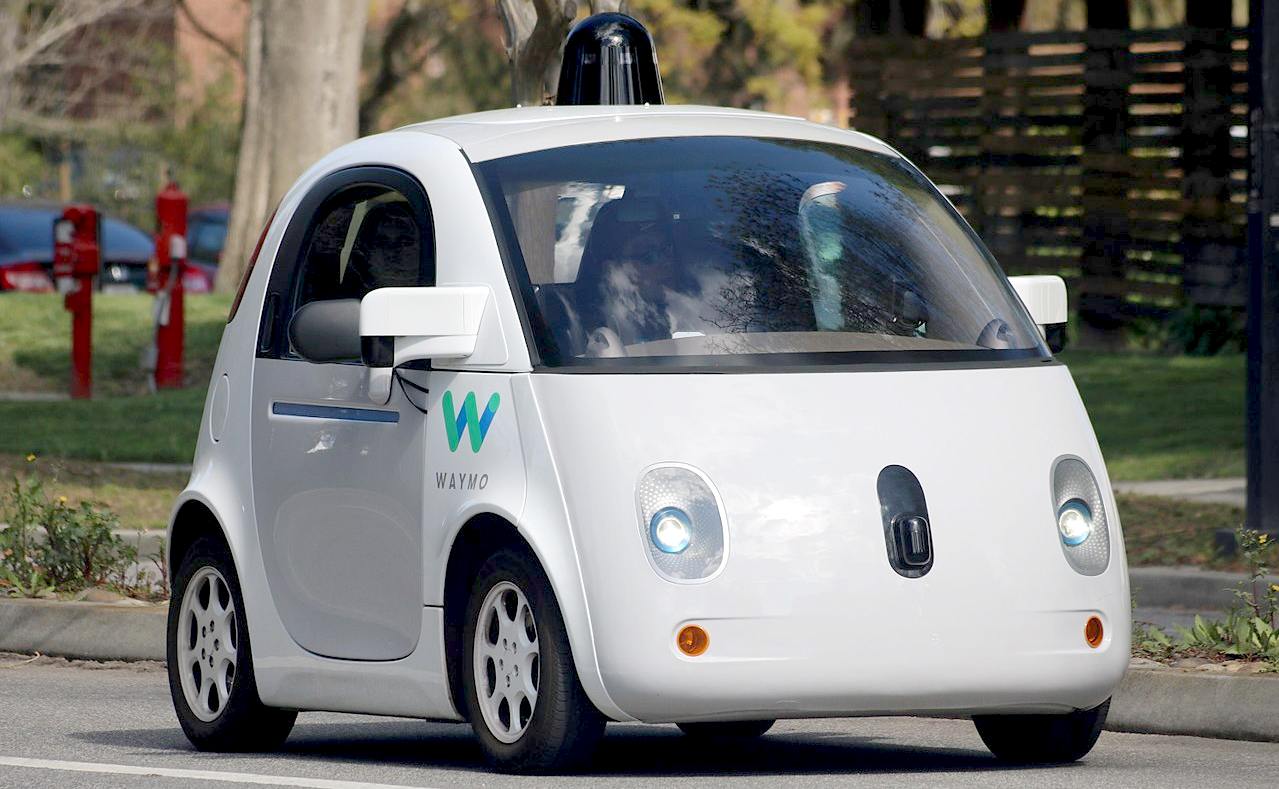
HISTORY
OF AUTOMATED CARS
The first semi-automated car was developed in 1977, by Japan's Tsukuba Mechanical Engineering Laboratory, which required specially marked streets that were interpreted by two cameras on the vehicle and an analog computer. The vehicle reached speeds up to 30 kilometres per hour (19 mph) with the support of an elevated rail.
A landmark autonomous car appeared in the 1980s, with Carnegie Mellon University's Navlab and ALV projects funded by the United States' Defense Advanced Research Projects Agency (DARPA) starting in 1984 and Mercedes-Benz and Bundeswehr University Munich's EUREKA Prometheus Project in 1987. By 1985, the ALV had demonstrated self-driving speeds on two-lane roads of 31 kilometres per hour (19 mph), with obstacle avoidance added in 1986, and off-road driving in day and nighttime conditions by 1987. A major milestone was achieved in 1995, with CMU's NavLab 5 completing the first autonomous coast-to-coast drive of the United States. Of the 2,849 mi (4,585 km) between Pittsburgh, Pennsylvania and San Diego, California, 2,797 mi (4,501 km) were autonomous (98.2%), completed with an average speed of 63.8 mph (102.7 km/h).
From the 1960s through the second DARPA Grand Challenge in 2005, automated vehicle research in the United States was primarily funded by DARPA, the US Army, and the US Navy, yielding incremental advances in speeds, driving competence in more complex conditions, controls, and sensor systems. Companies and research organizations have developed prototypes.
The US allocated US$650 million in 1991 for research on the National Automated Highway System, which demonstrated automated driving through a combination of automation embedded in the highway with automated technology in vehicles, and cooperative networking between the vehicles and with the highway infrastructure. The program concluded with a successful demonstration in 1997 but without clear direction or funding to implement the system on a larger scale. Partly funded by the National Automated Highway System and DARPA, the Carnegie Mellon University Navlab drove 4,584 kilometres (2,848 mi) across America in 1995, 4,501 kilometres (2,797 mi) or 98% of it autonomously.
Navlab's record achievement stood unmatched for two decades until 2015, when Delphi improved it by piloting an Audi, augmented with Delphi technology, over 5,472 kilometres (3,400 mi) through 15 states while remaining in self-driving mode 99% of the time. In 2015, the US states of Nevada, Florida, California, Virginia, and Michigan, together with Washington, DC, allowed the testing of automated cars on public roads.
From 2016 to 2018, the European Commission funded an innovation strategy development for connected and automated driving through the Coordination Actions CARTRE and
SCOUT. Moreover, the Strategic Transport Research and Innovation Agenda (STRIA) Roadmap for Connected and Automated Transport was published in 2019.
In 2017, Audi stated that its latest A8 would be automated at speeds of up to 60 kilometres per hour (37 mph) using its "Audi AI". The driver would not have to do safety checks such as frequently gripping the steering wheel. The Audi A8 was claimed to be the first production car to reach Level 3 automated driving, and Audi would be the first manufacturer to use laser scanners in addition to cameras and ultrasonic sensors for their system.
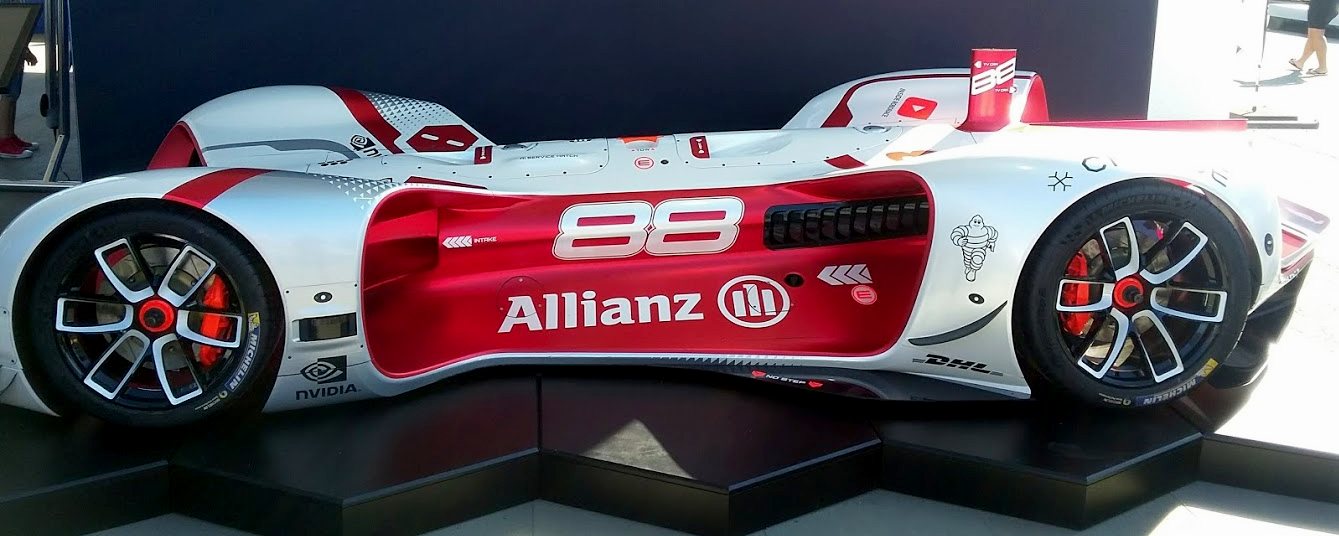
ROBOCAR
- A driverless racing car for RoboRace. Great, saves the high cost of human
drivers.
In November 2017, Waymo announced that it had begun testing driverless cars without a safety driver in the driver position; however, there was still an employee in the
car. In October 2018, Waymo announced that its test vehicles had traveled in automated mode for over 10,000,000 miles (16,000,000 km), increasing by about 1,000,000 miles (1,600,000 kilometres) per month. In December 2018, Waymo was the first to commercialize a fully autonomous taxi service in the US, in Phoenix, Arizona.
A*STAR's Institute for Infocomm Research (I2R) developed a self-driving vehicle which was the first to be approved in Singapore for public road testing at one-north in July 2015. It has ferried several dignitaries such as Prime Minister Lee Hsien Loong, Minister S. Iswaran, Minister Vivian Balakrishnan, and several ministers from other countries.
In 2020, a National Transportation Safety Board chairman clarified there is no self-driving car in the US in 2020:
"There is not a vehicle currently available to US consumers that is self-driving. Period. Every vehicle sold to US consumers still requires the driver to be actively engaged in the driving task, even when advanced driver assistance systems are activated. If you are selling a car with an advanced driver assistance system, you’re not selling a self-driving car. If you are driving a car with an advanced driver assistance system, you don’t own a self-driving car."
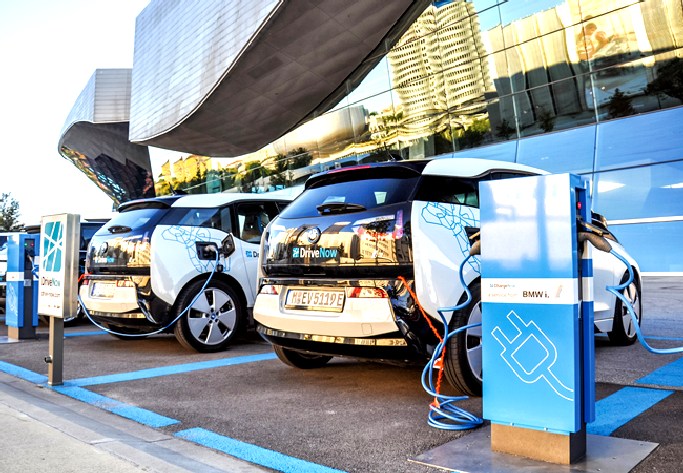
LEVELS
OF DRIVING AUTOMATION
In SAE's automation level definitions, "driving mode" means "a type of driving scenario with characteristic dynamic driving task requirements (e.g., expressway merging, high speed cruising, low speed traffic jam, closed-campus operations, etc.)"
Level 0: The automated system issues warnings and may momentarily intervene but has no sustained vehicle control.
Level 1 ("hands on"): The driver and the automated system share control of the vehicle. Examples are systems where the driver controls steering and the automated system controls engine power to maintain a set speed (Cruise Control) or engine and brake power to maintain and vary speed (Adaptive Cruise Control or ACC); and Parking Assistance, where steering is automated while speed is under manual control. The driver must be ready to retake full control at any time. Lane Keeping Assistance (LKA) Type II is a further example of Level 1 self-driving. The Automatic Emergency Braking feature which alerts the driver to a crash and deploys full braking capacity is also a Level 1 feature.
Level 2 ("hands off"): The automated system takes full control of the vehicle: accelerating, braking, and steering. The driver must monitor the driving and be prepared to intervene immediately at any time if the automated system fails to respond properly. The shorthand "hands off" is not meant to be taken literally – contact between hand and wheel is often mandatory during SAE 2 driving, to confirm that the driver is ready to intervene.
Level 3 ("eyes off"): The driver can safely turn their attention away from the driving tasks, e.g. the driver can text or watch a movie. The vehicle will handle situations that call for an immediate response, like emergency braking. The driver must still be prepared to intervene within some limited time, specified by the manufacturer, when called upon by the vehicle to do so.
Level 4 ("mind off"): As level 3, but no driver attention is ever required for safety, e.g. the driver may safely go to sleep or leave the driver's seat. Self-driving is supported only in limited spatial areas (geofenced) or under special circumstances. Outside of these areas or circumstances, the vehicle must be able to safely abort the trip, e.g. park the car, if the driver does not retake control. An example would be a robotic taxi or a robotic delivery service that only covers selected locations in a specific area.
Level 5 ("steering wheel optional"): No human intervention is required at all. An example would be a robotic taxi that works an all roads all over the world, all year around, in all weather conditions.
In the formal SAE definition below, note in particular the shift from SAE 2 to SAE 3: the human driver no longer has to monitor the environment. This is the final aspect of the "dynamic driving task" that is now passed over from the human to the automated system. At SAE 3, the human driver still has responsibility to intervene when asked to do so by the automated system. At SAE 4 the human driver is always relieved of that responsibility and at SAE 5 the automated system will never need to ask for an intervention.
CLIMATE CHANGE COP HISTORY
|
1995
COP 1, BERLIN, GERMANY |
2008
COP 14/CMP 4, POZNAN, POLAND
|
|
1996
COP 2, GENEVA, SWITZERLAND |
2009
COP 15/CMP 5, COPENHAGEN, DENMARK
|
|
1997
COP 3, KYOTO, JAPAN |
2010
COP 16/CMP 6, CANCUN, MEXICO
|
|
1998
COP 4, BUENOS AIRES, ARGENTINA |
2011
COP 17/CMP 7, DURBAN, SOUTH AFRICA
|
|
1999
COP 5, BONN, GERMANY |
2012
COP 18/CMP 8, DOHA, QATAR
|
|
2000:COP
6, THE HAGUE, NETHERLANDS |
2013
COP 19/CMP 9, WARSAW, POLAND
|
|
2001
COP 7, MARRAKECH, MOROCCO |
2014
COP 20/CMP 10, LIMA, PERU
|
|
2002
COP 8, NEW DELHI, INDIA |
2015
COP 21/CMP 11, Paris, France
|
|
2003
COP 9, MILAN, ITALY |
2016
COP 22/CMP 12/CMA 1, Marrakech, Morocco
|
|
2004
COP 10, BUENOS AIRES, ARGENTINA |
2017
COP 23/CMP 13/CMA 2, Bonn, Germany
|
|
2005
COP 11/CMP 1, MONTREAL, CANADA |
2018
COP 24/CMP 14/CMA, Katowice, Poland
|
|
2006
COP 12/CMP 2, NAIROBI, KENYA |
2019
COP 25/CMP 15/CMA, Madrid,
Spain
|
|
2007
COP 13/CMP 3, BALI, INDONESIA |
2020
COP 26/CMP 16/CMA 3, Glasgow,
Scotland
|

TOP
POWER
COMPANIES A - Z Duke
Energy Corporation, DUK, N. Carolina, USA Dominion
Energy Inc., Richmond, Virginia EDF
Électricité de France SA ENEL Engie E.ON Exelon
Corporation EXC, Chicago, USA GE
General Electric Iberdrola KEPCO
Korean Electric Power Corporation National
Electric Grid & Central Electricity Authority (India) National
Energy Board (Canada) National
Grid plc (formerly Central Electricity Generating Board UK) Next
Era Energy Inc. Florida, USA
Scottish & Southern Energy Southern
Company, Atlanta, Alabama, Georgia, Mississippi, USA State
Grid Corporation of China TEPCO
Tokyo Electric
Power
Company
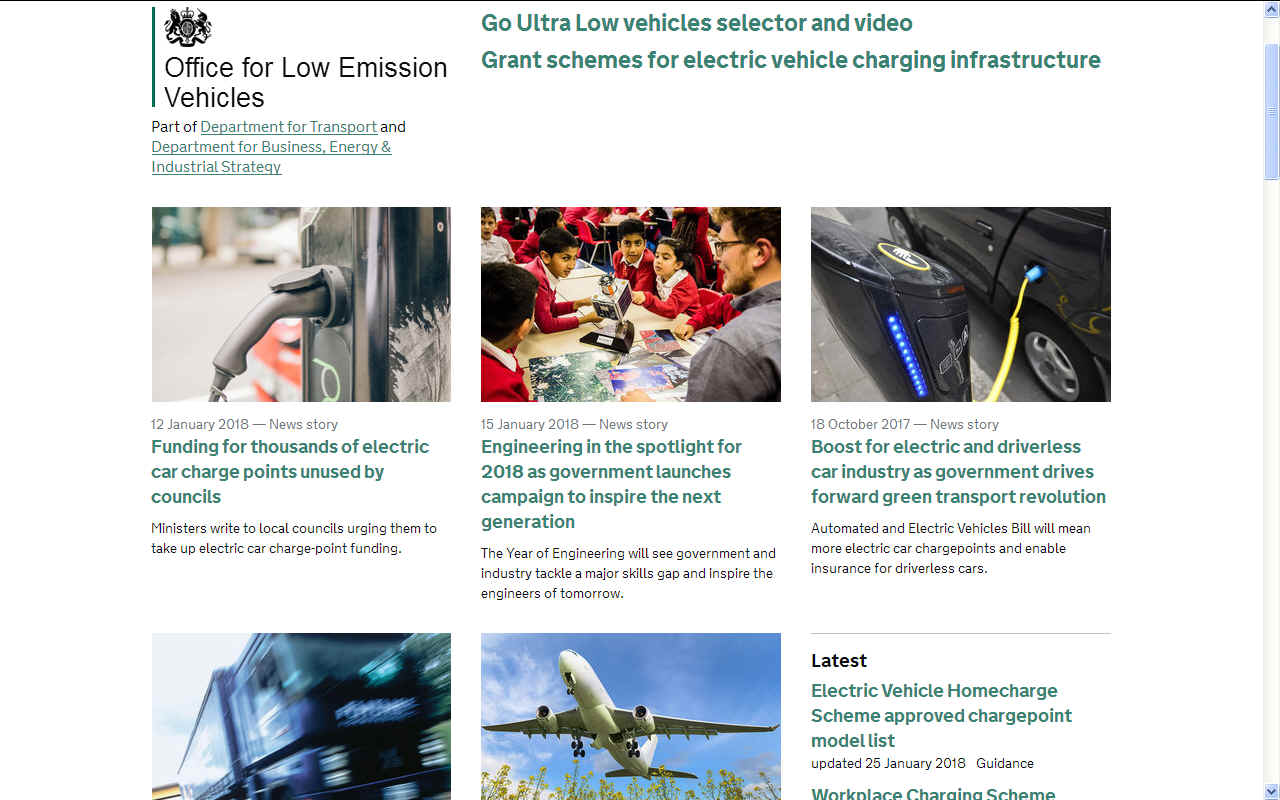
SIX
STEPS TOWARD A COOLER PLANET
1.
TRANSPORT:
Phase
out polluting vehicles. Governments aim to end the sale of new petrol,
and diesel vehicles
by 2040 but have no feasible infrastructure
plan to support such ambition. Marine
transport can be carbon neutral with smaller
container ships that are solar and wind
powered.
2.
RENEWABLES:
Renewable
energy should replace carbon-based fuels (coal,
oil
and gas)
in our electricity,
heating and transport.
3.
HOUSING:
On site micro
or macro generation is the best option, starting with new build homes that
are zero carbon, or energy neutral. We must
make it illegal for councils to
grant planning permission to any new houses that are not compliant. Local
authorities are to blame for kleptocratic
decision making - making them climate
criminals.
4.
AGRICULTURE:
We need
trees to
absorb carbon
emissions from a growing
population, flying, and to build affordable new homes. Reducing food
waste and promoting less energy intensive eating habits such as no
meat Mondays.
5.
INDUSTRY:
Factories should be aiming for solar
heating and onsite renewable energy
generation.
6.
POLITICS:
-
National governing bodies need to adopt rules to eliminate administrative
wastages, to include scaling down spending on war machines, increasing spend
on educating
the public and supporting sustainable social policies that mesh with other
cultures. One way of pushing this agenda is total transparency
in Governments and Courts as per United
Nations SDG 16. This would tend to prevent corrupt
politicians and civil servants from pursuing unlawful agendas.
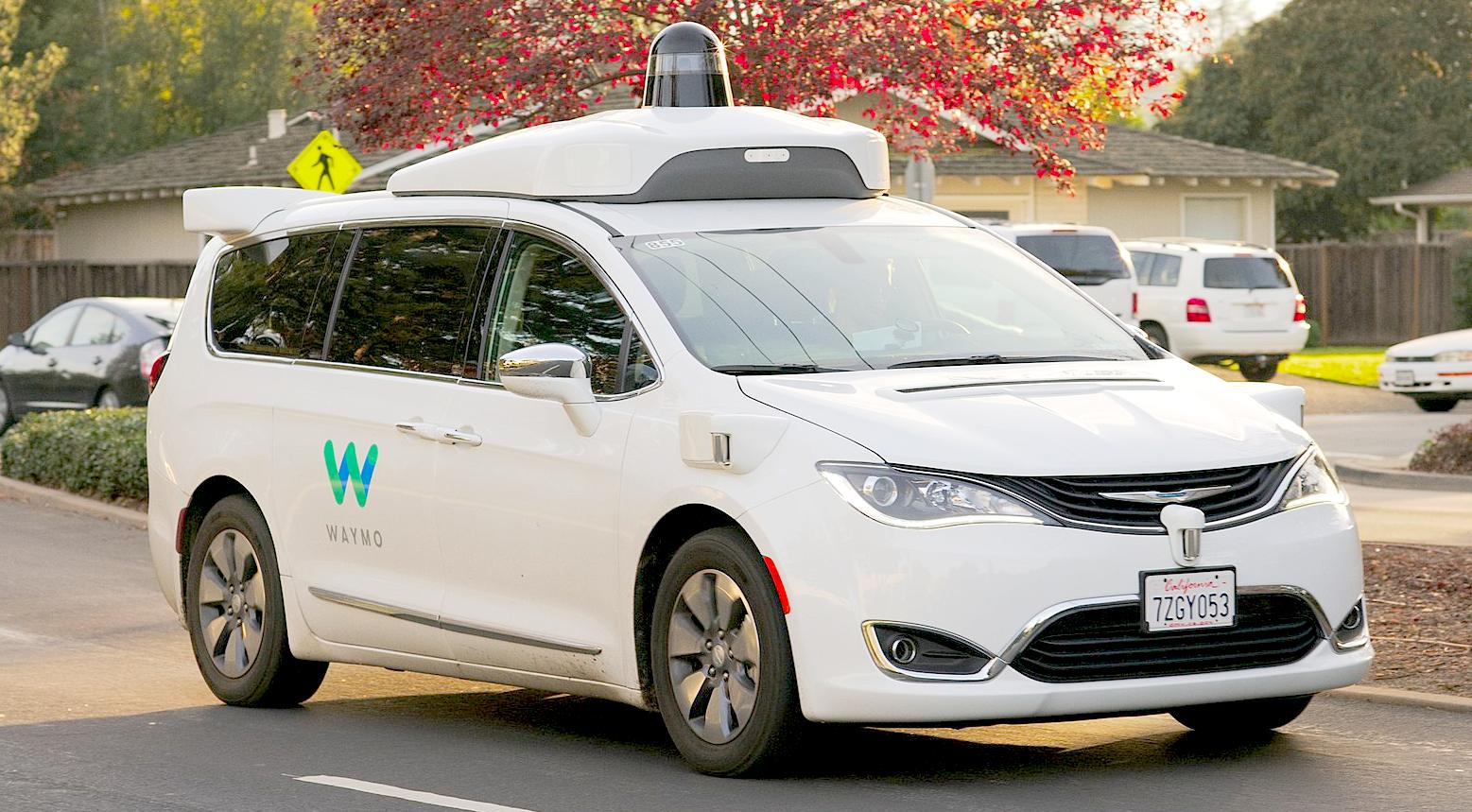
CONTACTS
...
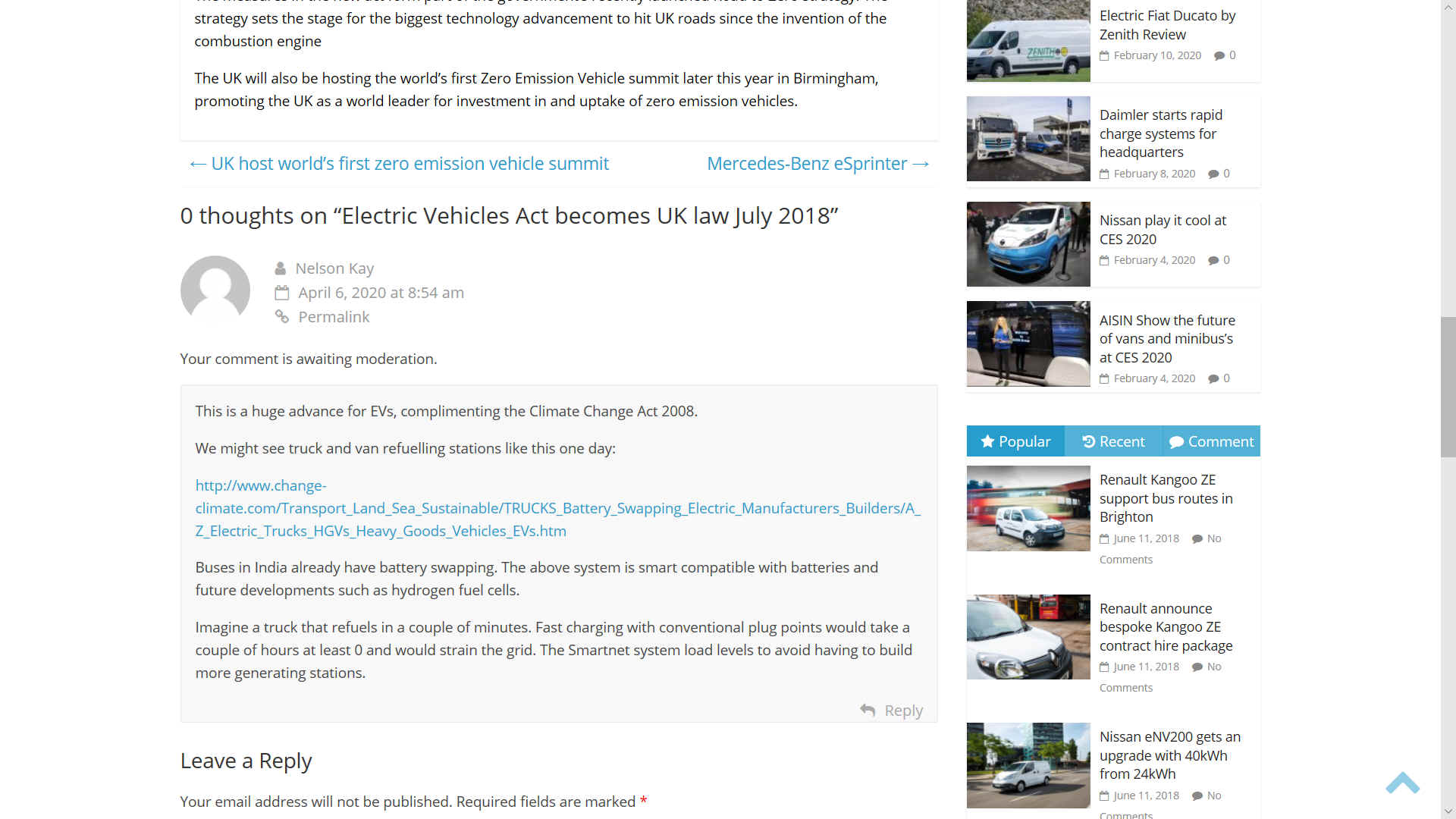
LINKS & REFERENCES
http://electricvanandtruck.com/the-race-to-decarbonise/
https://ec.europa.eu/transport/themes/urban/vehicles/road/electric_en
http://electricvanandtruck.com/electric-vehicles-act-uk/
https://en.wikipedia.org/wiki/Self-driving_car
https://www.gov.uk/government/news/boost-for-electric-and-driverless-car-industry-as-government-drives-forward-green-transport-revolution
https://lordsbusiness.parliament.uk/ItemOfBusiness?itemOfBusinessId=52304§ionId=40&businessPaperDate=2018-07-19
https://services.parliament.uk/bills/2017-19/automatedandelectricvehicles.html
http://www.legislation.gov.uk/

|





















